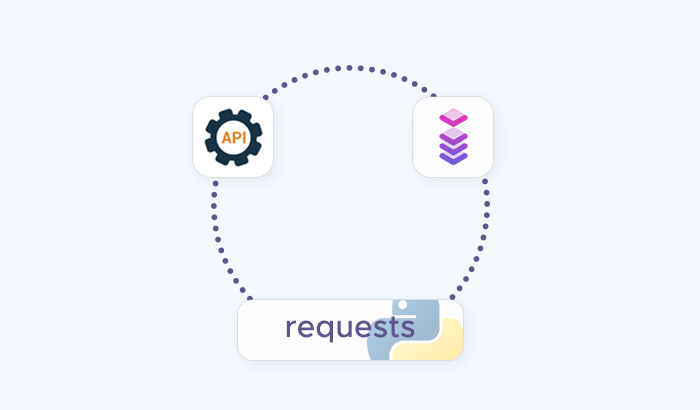

Targeted ad campaigns are the cornerstone of any digital marketing strategy. In most cases, they’re exactly the tool that brings most traffic and leads to the promoted website. Although the efficiency of this approach heavily relies on how well the campaign was targeted. A marketing manager who works on the targeting must be highly skilled and experienced for the ads to be fruitful.
But the issue is that it’s not only hardships with targeting standing on the way to success. At all times malefactors were always finding new methods that allowed them to fool people and take their money. And the digital environment is not an exception. Moreover, it seems that on the Internet fraudsters have even more tools and freedom to accomplish their malicious goals. And one of the approaches they’re actively using today is ad fraud. It allows them to fool advertisers into believing their ads are working correctly while in reality, they receive no true traffic or leads.
Forms of ad fraud
There are several methods malefactors are using to get advertisers’ money while not delivering any results.
Non-compliant ads
Fraudsters might offer advertisers to place ads on a very reputable website with good traffic but in reality, put them on some other site, if banners appear somewhere at all. Usually, this involves phishing as well. Malefactors contact the business offering the ad placement while pretending to be a well-known publisher by using a very similar domain name, and advertisers, of course, agree to this offer. They pay money, but the ad never appears on the mentioned website.
Also, some website owners might create fake traffic to increase the costs of ads that can be placed on the site. It’s quite easy to imitate high traffic, and some publishers use this approach to earn more money. However, it’s as well easy to see that the traffic is fake.
Another tactic fraudsters use is to replace the site the ad leads to with some other website - usually, malicious. Thus, users click the ad willing to browse the advertised products but instead they get infected with malware or suffer from some other fraudulent activity.
And finally, malefactors use malware to replace ads on the Internet with some other banners. So advertisers continue paying for those ads while the information doesn’t reach their target audience.
Therefore, malefactors completely ruin the advertiser’s chances for success even if the ads were targeted very well.
Click fraud
Most targeted ads are based on the pay-per-click model. This approach is very appealing since you have to pay only for clicks on your banner, not for its spot. However, fraudsters use it quite often for getting profit off advertisers. They use a bot that will click on your ad generating fake clicks. But what’s in it for them if you’re using a network like Google Ads? It’s Google who will get all the money you spend on fake clicks, not the malefactor.
Don’t you worry, the latter receives profit in other ways. First of all, click fraud will increase the price for one click and, therefore, bring more revenue to a website owner. Although often this approach is used not by fraudsters but by your competitors. They try to drain your budget as quickly as possible so that your campaign brings as little leads as possible.
Fake impressions
CPM-based ad campaigns also suffer from malicious activity. Fraudsters would use bots or redirects to create fake impressions that would look like real ones. The advertiser doesn’t suspect anything for quite a long time because the reports show that the ad is shown to the target audience. But in reality, it’s either that significantly fewer users saw the banner, or the ad was partially displayed on some other website with poor traffic.
Cookie stuffing
If your business offers an affiliate marketing program, you might become a victim of cookie stuffing. Such ad fraud is very common, and it is not easy to detect. The mechanism is quite simple. You can see if the user arrived at your website from one of your affiliates by the cookie the browser of the user sends to your site. Once your server detects such a cookie - an affiliate receives the promised fee from you.
Fraudsters use pop-ups, scripts, toolbars, or even images to stuff the browser of a user with fake cookies. Therefore, when this user arrives at your website, your system thinks that one of the affiliates brought the lead, and the malefactor gets paid. Of course, you still get your revenue, but you’re also paying the fraudster for the user they didn’t really bring.
Why does ad fraud exist?
Well, because if there is a way to make a profit off others in some easy way, malefactors will always use it. The question is, why do ad networks do nothing about these frauds? The issue is that they could help businesses only with click and impression fraud because other malicious methods involve direct contact between the advertiser and the malefactor. But it’s quite impossible to detect fraudulent activity before you see some weird data in statistics. Also, the better networks and advertisers learn to detect fake ads, the more advanced the actions of fraudsters get. So it’s a never-ending war. And you as an advertiser is the only one who can really protect your ads.
How can you protect your business?
If you’re buying ads directly from the publisher, you need to double-check the domain name. Be careful, malefactors can use very similar names that will appear just like real ones. Also, use advanced tools that show information about the traffic of the source website. And compare it with the data you can see on the site. For example, if you’re going to buy an ad from some online media with traffic over 100k weekly visitors, check the views per article first. If there are only a couple of hundreds of views on average, it’s likely that such high traffic is fake. You can find a lot of methods of checking if the traffic is real if you search the internet.
It’s also easy to detect click fraud. Simply check the stats and pay attention to the:
- IP address,
- Click timestamp,
- Action timestamp,
- User-agent.
If you become a victim of the click fraud, a lot of clicks will have the same IP address and the same or no user-agent. Also, the click on the ad will not be followed by some normal user activity. In this case, it’s better to put the campaign on hold before it drains your budget for nothing.
Finally, you can use proxies to verify your ads and make sure that your target audience sees them. Switching between countries, you can check if the banner is there, and if it leads to the target page. Infatica offers a wide selection of proxies from different countries, so using them, you will be able to verify the ads for all your target audiences.
By being attentive and aware of possible fraud, you can minimize the risks of malefactors draining your budget for nothing. Use only trustworthy networks, always double-check all the details, and use proxies to make sure that your ads are in the right place. Then it’s very unlikely that you suffer from fraudulent activity.







